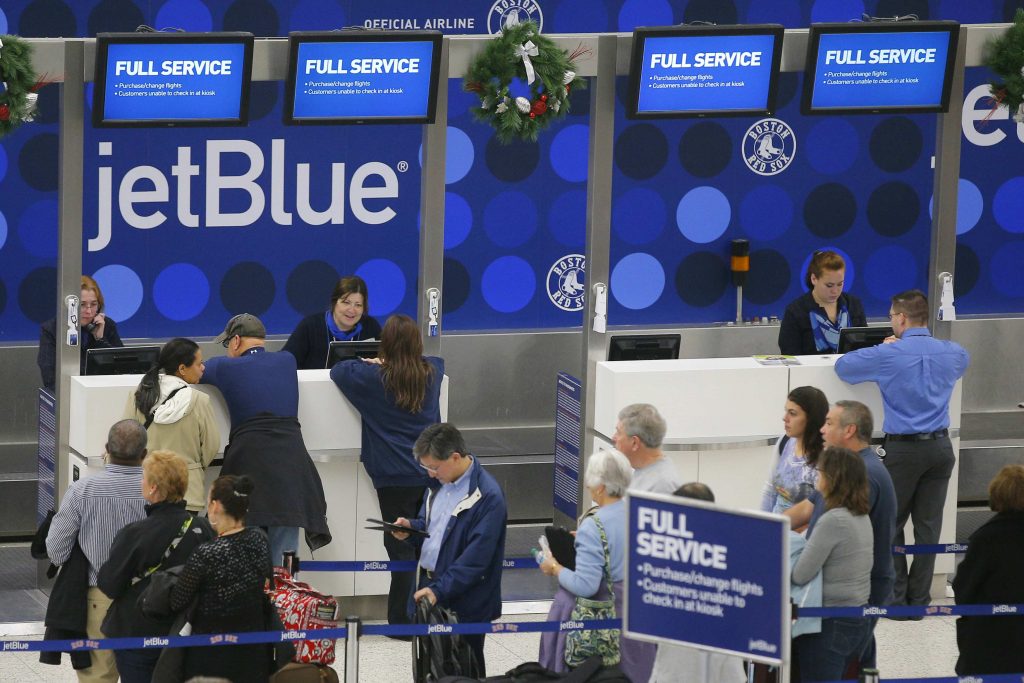Skift Take
JetBlue is a publicly traded corporation, and it has little choice but to reduce capacity when revenues fall because that's what investors expect. But this isn't great for travelers. They would prefer JetBlue discount its fares to to fill seats when demand falls.
JetBlue Airways struggled so much in January with revenues that it may cull some less profitable flying in coming months, airline executives said Thursday.
In doing so, JetBlue is betting on the basic tenet of supply-and-demand: With fewer flights to sell, the airline should earn more money from each route. In time, executives said Thursday, JetBlue calculates this strategy will ensure it can consistently generate margins above the U.S. industry average.
“I think that we are all extremely disappointed in January,” JetBlue CEO Robin Hayes told analysts on the carrier’s fourth quarter earnings call. “Let’s get that out there. Let’s get it on the table.”
The problem was JetBlue’s revenue per available seat mile, or RASM, an industry metric measuring how much money an airline makes for each passenger it flies one mile. So far this month, JetBlue said, its RASM has decreased between 8 and 9 percent on a year-over-year basis.
For the fourth quarter, however, the slide was not as drastic. On a year-over-year basis, JetBlue said fourth quarter RASM fell just 1.5 percent. Overall for the fourth quarter, JetBlue reported net income of $172 million, about $18 million less than it made in the same period in 2015. Its pre-tax margin for 2016’s fourth quarter was 16.7 percent, down from 19 percent in 2015.
JetBlue said it expects its revenue performance to improve significantly in February and March, but decreases as drastic as January’s spook investment analysts, who repeatedly asked on the earnings call what steps the airline will take to stop its revenue slide. JetBlue has said it plans to increase capacity by 6.5 to 8.5 percent this year, but those plans are apparently under review.
“We recognize that among the levers that we control to produce above average industry margins, capacity is very important,” said Marty St. George, JetBlue’s executive vice president for commercial and planning.
Hayes said the airline does not want to “overreact” to one bad month, but he said analysts should expect some capacity cuts soon. Executives said they might make some changes both in Latin America — flights to Puerto Rico have not been performing as well as they once did — and within the continental United States.
“We have shown an ability to react,” Hayes said. “It is early enough in the year that we do have most of the year ahead of us as we start to think about the changes will make. Some of those you will see quite soon.”
In a note published after the call, analyst Daniel McKenzie of Buckingham Research Group predicted the airline will fix its revenue problems quickly.
“We view the January revenue disappointment as self-inflicted and temporary,” he said.
No West Coast International Flights
In other matters, JetBlue said it is evaluating how to proceed with its Long Beach, California focus city after the local city council voted not to let the airport build a U.S. Customs and Border Protection facility. JetBlue had agreed to pay for the facility because it wanted to add flights to Latin America
JetBlue had been lobbying for it for several years, and the decision came as a surprise, Hayes said. Long Beach is JetBlue’s only focus city on the West Coast, but it is a capacity-controlled airport, and JetBlue only has the rights to fly 35 daily departures.
Hayes said Long Beach will remain a focus city, but otherwise said little about the airline’s plans there.
“We were really disappointed and surprised by the vote,” he said. “We are still taking stock in terms of how we go forward. I don’t rule anything in or out.”
The Daily Newsletter
Our daily coverage of the global travel industry. Written by editors and analysts from across Skift’s brands.
Have a confidential tip for Skift? Get in touch
Tags: earnings, jetblue airways
Photo credit: JetBlue may not grow capacity by as much as planned later this year. Brian Snyder / Reuters
